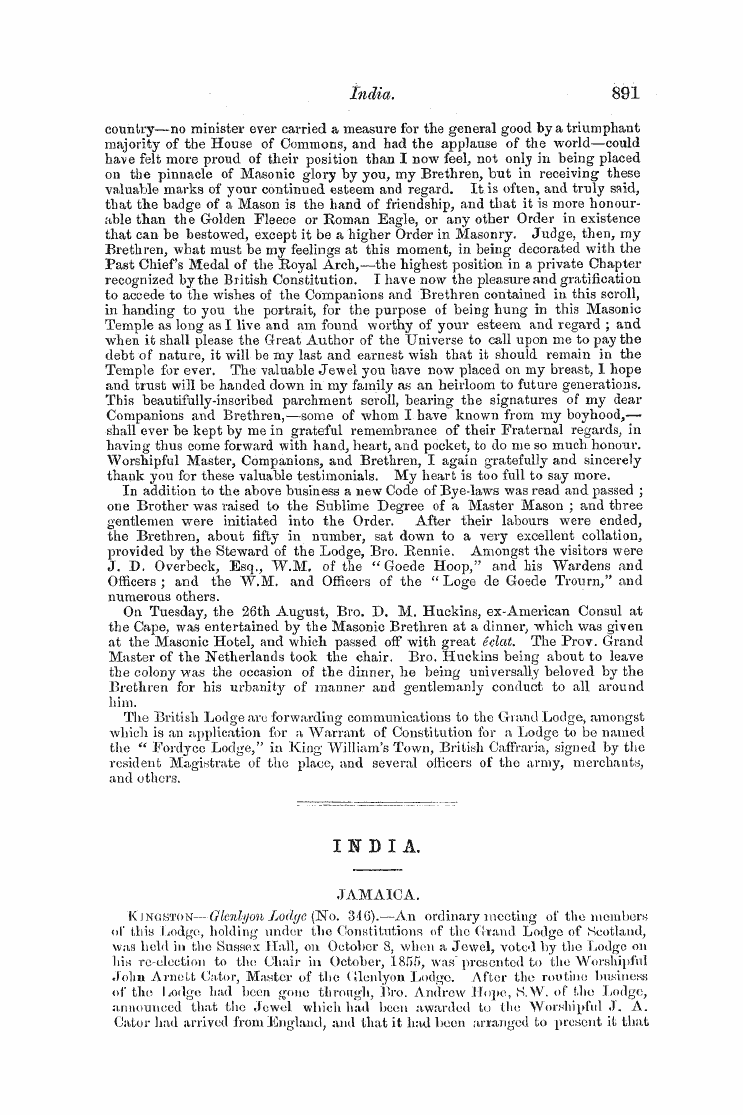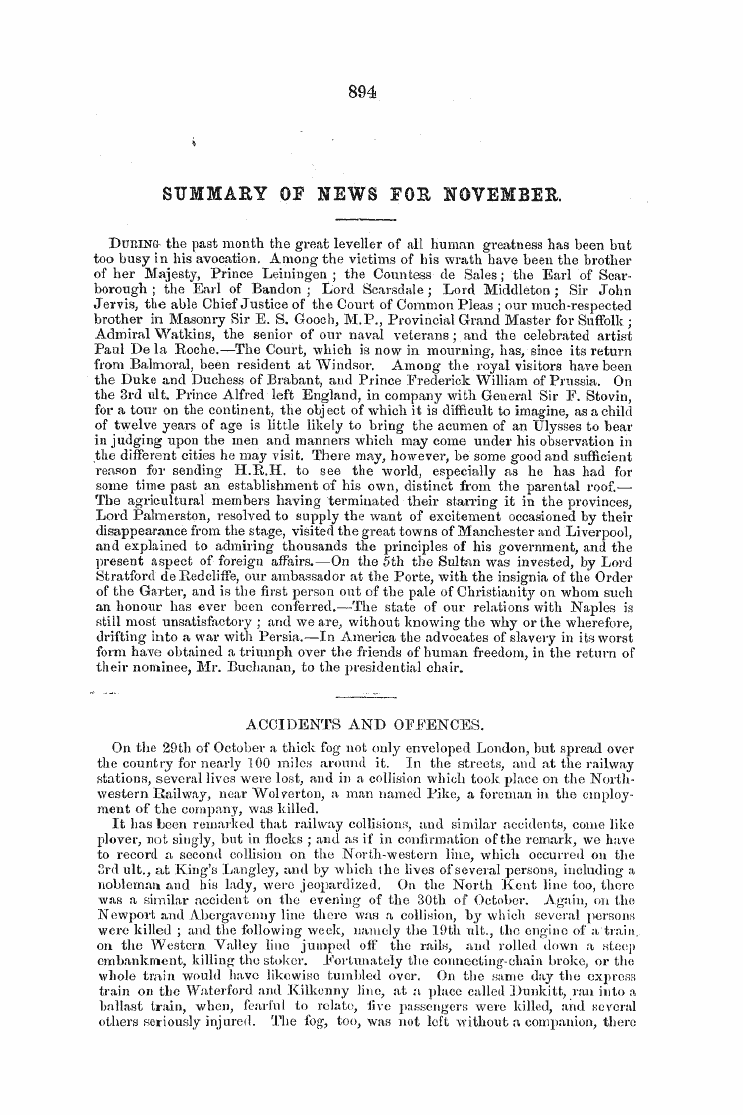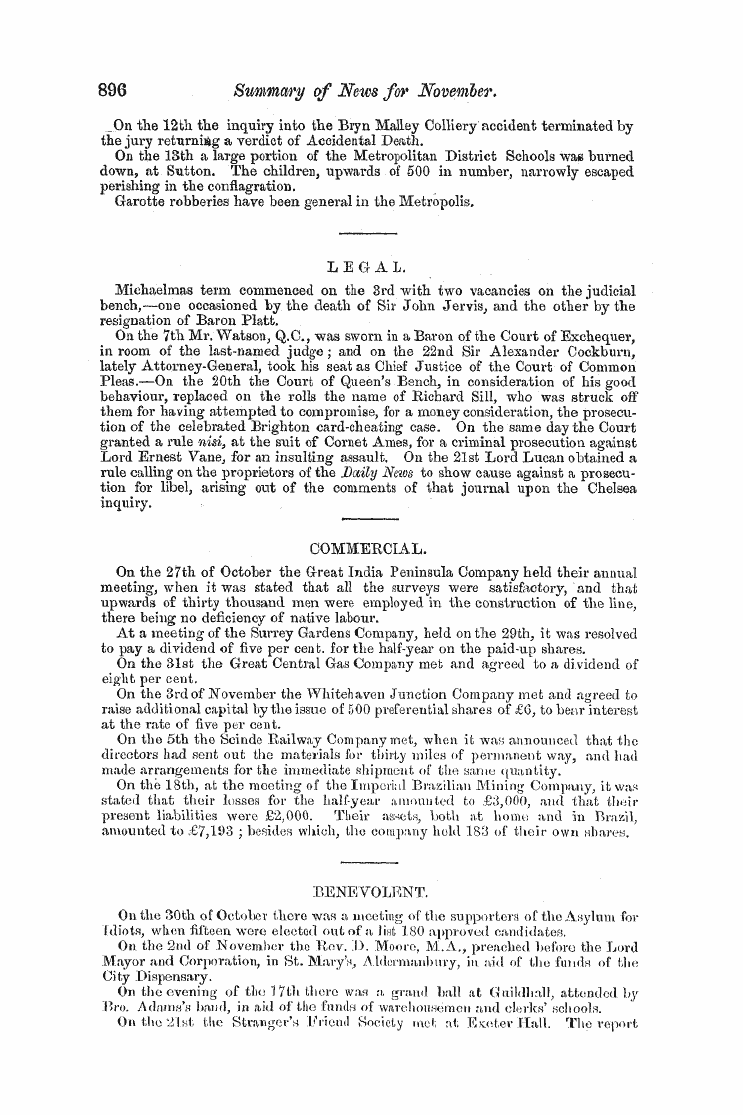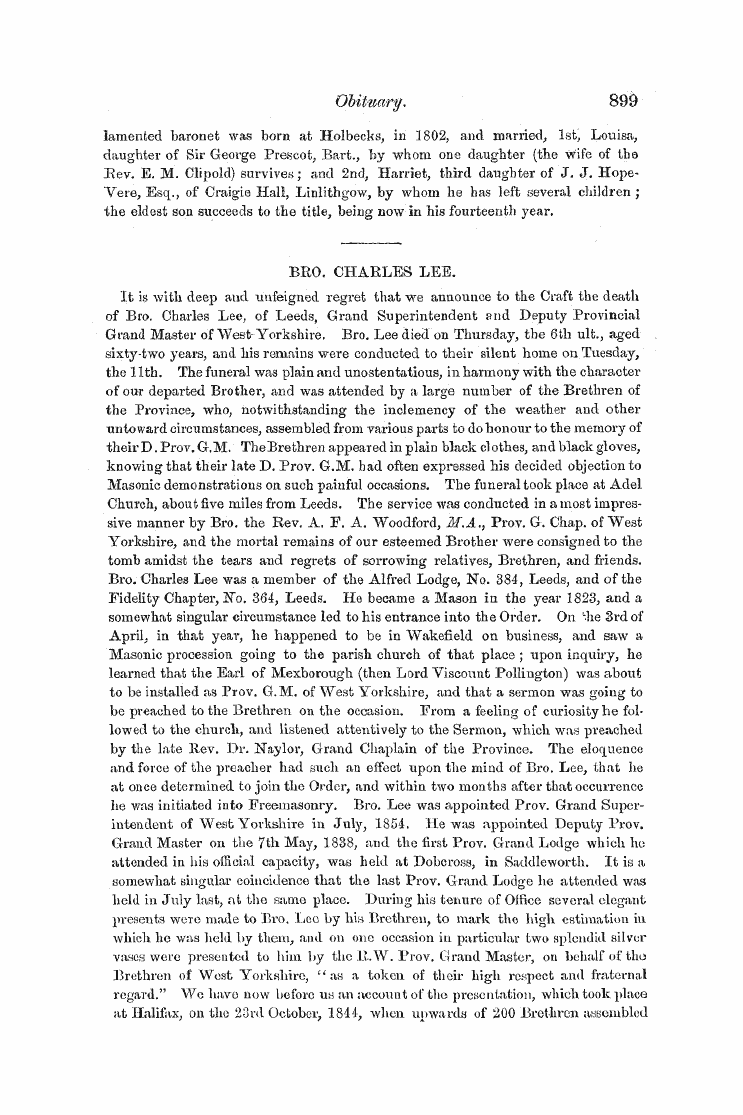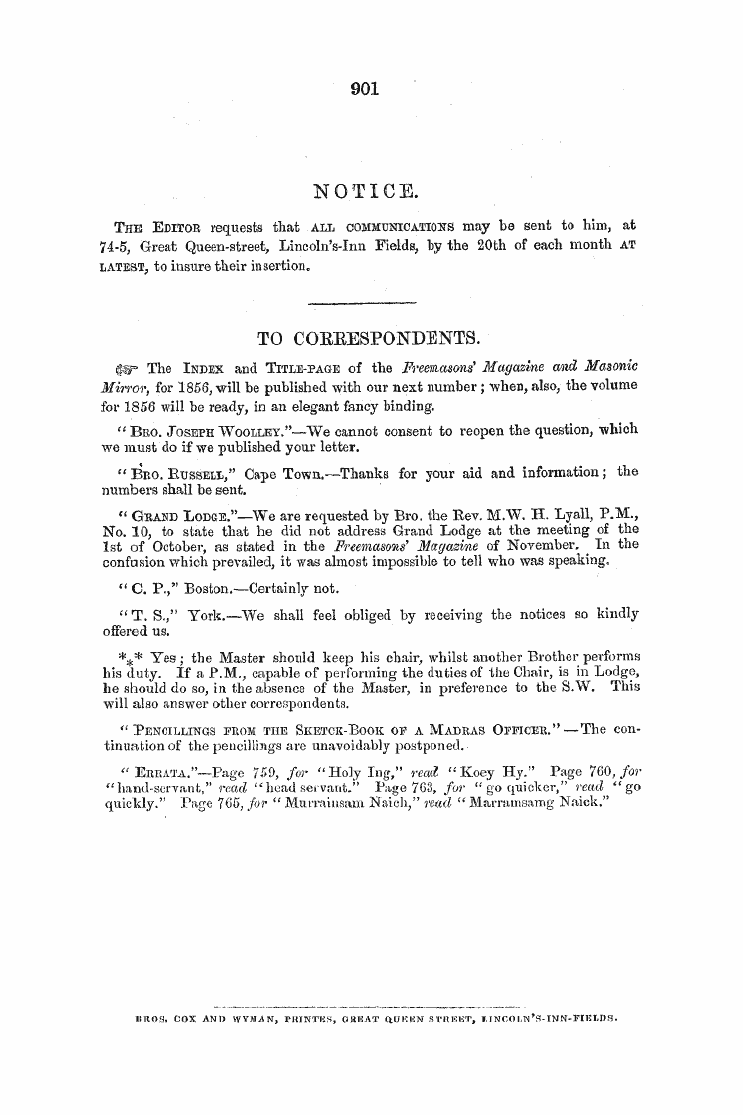-
Articles/Ads
Article ON THE RELIGION OP THE CELTS, AND THE CU... ← Page 2 of 7 →
Note: This text has been automatically extracted via Optical Character Recognition (OCR) software.
On The Religion Op The Celts, And The Cu...
Water , . as affording a symbol , by its inexhaustible sources , of the continual '" and successive benefits bestowed on the human race , and also of the mystical sympathy existing between the soul of man and the purity of water , an idea perhaps derived from some such purifying process as that of the Alpine glaciers , which have a constant tendency to throw up to the sides the heaps of stone and
mud which they accumulate m their course . They also paid particular honour to trees , as affording a proof of an immense productive power . During many centuries , they refused to use temples , considering it an outrage to the Divinity to be confined within any limits , so that the vault of the sky or the depth of the forest was originally their only sanctuaries . Their mysterious rites were carried on , completely unknown to the multitude , one while amidst abrupt precipices , at other times in a circle of huge
and misshapen stones , formed into a sacred inclosure , or in the gloomy recesses of a dark cavern . Lord Carlisle , in his " Diary , " mentions two sets of curious ruins at Crendi , in the island of Malta , about a quarter of a mile from each other : —
" They are probably those of some Phoenician place of worship , consisting of very large stones , of which the lowest are upright , and what may be called Druidical . Above them are four or five horizontal layers , a portion of them being as if tatooed with a circular pattern . There is no vestige of any roof . The chambers
are of different sizes , with the apertures , and large seats round the outer thresholds . Two or three altars seem to be in their places , and one of them has a very long , flat slab of stone , which might have served for human sacrifice . Near , another opening communicates with a second chamber , large enough to admit the body of a man , which again may have served for oracular responses . "— - ( P . 248 . )
In the Masonic Magazine for August , 1856 ( p . 553 ) , is a description of La Koche aux Fees , taken from a French Gruide Book . The mention of a structure of a similar form , and probably used for the same purpose , is here copied from Bell ' s " "Wayside Pictures " ( p . 316 ) . " The finest Celtic monunient , the largest and most regular within the limits of Brittany or Anjou , is to be seen near the village of Bagneux , about a mile from Saumur .
"This monument is of a rectangular form , raised on the side of a hill , and composed of enormous blocks of sandstone . It is 58 feet long , 21 wide , and 7 high from the ground . The disposition of the stones is perfectly uniform , four on each side for the walls , four for the roof , one on the left side near the entrance , and one on the west , closing up the structure at that end . There are altogether seven ^ teen of these immense blocks , all unhewn , and in thickness they vary from 18 inches to 2 J- feet . On the top of the hill , not far from the neighbouring village of Riou , is a smaller monument , consisting of six great stones , also set to the east , and equally regular in form . The interior of the larger structure has the appearance of a vast subterranean sepulchre .
" What could have been the object of this rude stony temple , mausoleum , or whatever it was ? " The natural formation of a mountainous region , the ranges and points of lofty summits , the immense masses of rock , the numerous fountains , torrents , cascades , and lakes to be met with in the Alps ,
Note: This text has been automatically extracted via Optical Character Recognition (OCR) software.
On The Religion Op The Celts, And The Cu...
Water , . as affording a symbol , by its inexhaustible sources , of the continual '" and successive benefits bestowed on the human race , and also of the mystical sympathy existing between the soul of man and the purity of water , an idea perhaps derived from some such purifying process as that of the Alpine glaciers , which have a constant tendency to throw up to the sides the heaps of stone and
mud which they accumulate m their course . They also paid particular honour to trees , as affording a proof of an immense productive power . During many centuries , they refused to use temples , considering it an outrage to the Divinity to be confined within any limits , so that the vault of the sky or the depth of the forest was originally their only sanctuaries . Their mysterious rites were carried on , completely unknown to the multitude , one while amidst abrupt precipices , at other times in a circle of huge
and misshapen stones , formed into a sacred inclosure , or in the gloomy recesses of a dark cavern . Lord Carlisle , in his " Diary , " mentions two sets of curious ruins at Crendi , in the island of Malta , about a quarter of a mile from each other : —
" They are probably those of some Phoenician place of worship , consisting of very large stones , of which the lowest are upright , and what may be called Druidical . Above them are four or five horizontal layers , a portion of them being as if tatooed with a circular pattern . There is no vestige of any roof . The chambers
are of different sizes , with the apertures , and large seats round the outer thresholds . Two or three altars seem to be in their places , and one of them has a very long , flat slab of stone , which might have served for human sacrifice . Near , another opening communicates with a second chamber , large enough to admit the body of a man , which again may have served for oracular responses . "— - ( P . 248 . )
In the Masonic Magazine for August , 1856 ( p . 553 ) , is a description of La Koche aux Fees , taken from a French Gruide Book . The mention of a structure of a similar form , and probably used for the same purpose , is here copied from Bell ' s " "Wayside Pictures " ( p . 316 ) . " The finest Celtic monunient , the largest and most regular within the limits of Brittany or Anjou , is to be seen near the village of Bagneux , about a mile from Saumur .
"This monument is of a rectangular form , raised on the side of a hill , and composed of enormous blocks of sandstone . It is 58 feet long , 21 wide , and 7 high from the ground . The disposition of the stones is perfectly uniform , four on each side for the walls , four for the roof , one on the left side near the entrance , and one on the west , closing up the structure at that end . There are altogether seven ^ teen of these immense blocks , all unhewn , and in thickness they vary from 18 inches to 2 J- feet . On the top of the hill , not far from the neighbouring village of Riou , is a smaller monument , consisting of six great stones , also set to the east , and equally regular in form . The interior of the larger structure has the appearance of a vast subterranean sepulchre .
" What could have been the object of this rude stony temple , mausoleum , or whatever it was ? " The natural formation of a mountainous region , the ranges and points of lofty summits , the immense masses of rock , the numerous fountains , torrents , cascades , and lakes to be met with in the Alps ,




























































